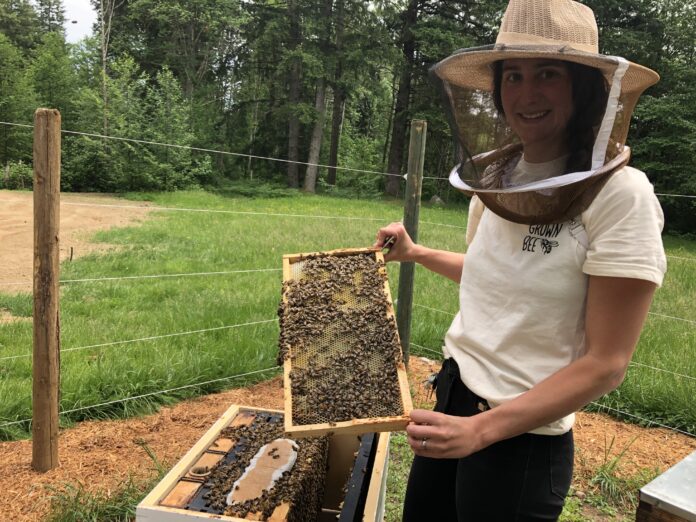Beekeeping in B.C. is at a large milestone, passing over 150 years in the province. However, issues with climate change are affecting beekeepers and their hives.
The provincial government says what started with two hives arriving in Victoria has grown to an industry with a $250 million agricultural impact per year. They add there are over 2,300 beekeepers in the province as hobby, part-, or full-time operations with over 47,000 colonies.
For Rachel Halliwell, owner of Home Grown Bee in the Comox Valley, this time of year ramps up production with the bees out and about for spring.
“Now in May, it’s full days. When I close my eyes, I see bees. That’s how often I’m in hives,” said Halliwell. “It’s really maintaining their growth and checking for diseases constantly.”
Halliwell’s business also targets bee keeping supplies and education for other beekeepers or interested people in the area.
She says over the eight years of being in the bee industry, however, the job has become more difficult with varroa mites and climate change potentially to blame for a loss of bees.
“In the hives, varroa’s always been a big issue, maybe the moisture and the fluctuating temperatures,” said Halliwell. “Last year in particular was an odd year. We had a really late start, May and June was really rainy, and we had a really hot October.
“Even though it’s just a shift in the climate, I think it seriously affected hive management and honeybees.”
Halliwell says she was lucky and did not lose many bees, but figures will come out from the government after surveys are done and the numbers are usually around 30 per cent.
In a report from Statistics Canada last year, the number of beekeepers in Canada grew to 13,850 from 13,391 the previous year. However, the number of colonies dropped from 834,262 to 764,829.
For Halliwell, she says bees’ roles are very important in our food system along with other pollinators, and other things can be done to benefit them in doing their job.
“There’s something called continuous bloom where you plant something in March or February that blooms then and then when it’s going out of bloom, something else is blooming in your garden,” said Halliwell.
“So, there’s constantly food available for bees from February to October, and then they hibernate.”
Halliwell adds dandelions, buttercups, blackberries and other plants can be used for pollinating opportunities.
“If you don’t have space to grow, sometimes it’s leaving things undisturbed. Bumble bees like to create nests in rocks or tufts of mulch or leaves,” said Halliwell.
The province says around $10 million of honey and other hive products are produced each year, and now calls May 29 the Day of the Honey Bee to recognize the importance they play in human survival and daily life.






